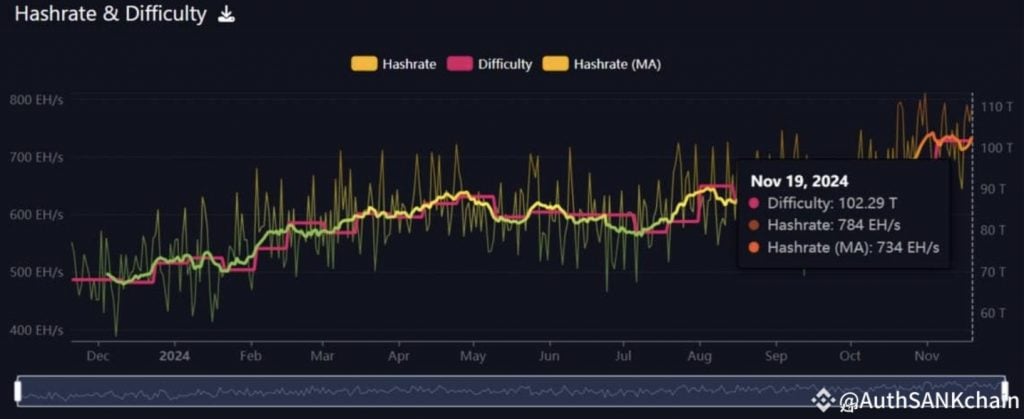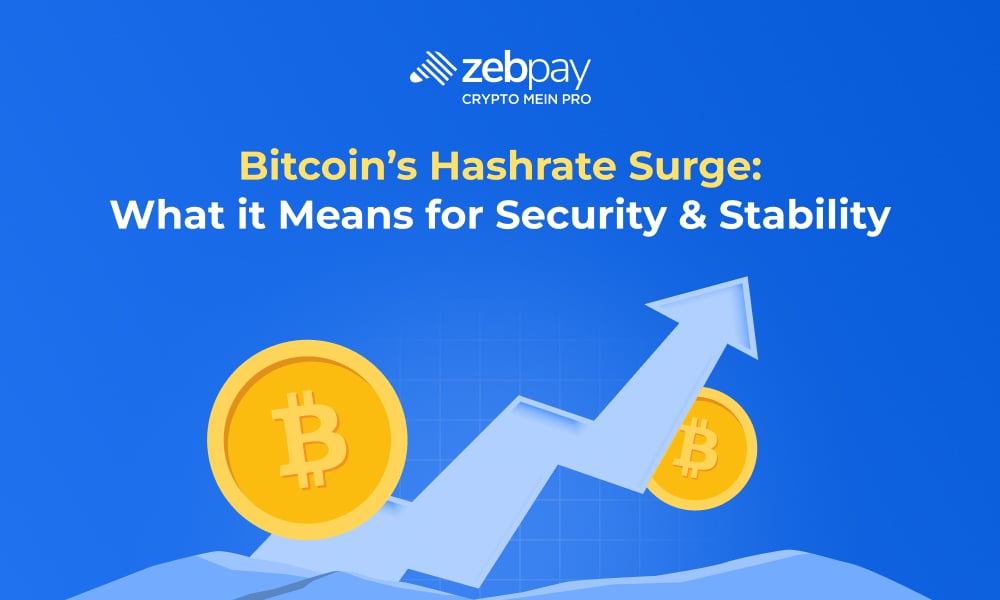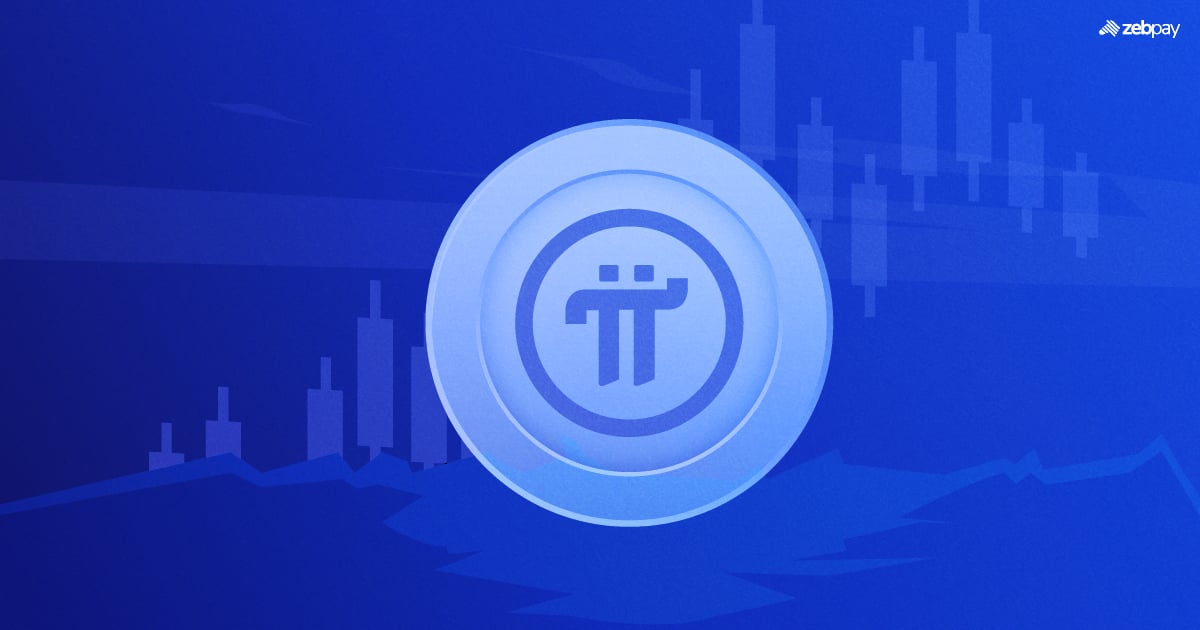In recent months, Bitcoin’s (BTC) hashrate has experienced a significant surge, setting new all-time highs and marking a key milestone in the network’s evolution. Market reports suggest that BTC’s hashrate has shattered records, soaring to an unprecedented 769.8 exahashes per second (EH/s) as of late 2024. This milestone not only underscores the relentless advancement of mining technology but also cements the network’s security like never before. With mining difficulty topping 102 trillion, this meteoric rise in BTC’s hashrate sparks discussions on miner profitability, operational costs, and its role in stabilising a post-halving ecosystem, shaping BTC’s future. Dive in to uncover how this surge shapes BTC’s future.

Factors Behind the Recent Hashrate Surge
- Advancements in Mining Technology: The introduction of more efficient ASIC miners has boosted computational output while reducing energy consumption.
- Rising Adoption of Renewable Energy: Increased use of solar, wind, and hydroelectric power has made mining more cost-effective and sustainable.
- Post-Halving Incentives: The reduced block reward from BTC’s recent halving has pushed miners to increase efficiency and scale to maintain profitability.
- Institutional Investments: Large-scale mining farms backed by institutional funding have added significant capacity to the network.
- Geographical Shifts: Mining operations have relocated to regions with low energy costs and favourable regulations, such as North America and central Asian countries.
- Read more: Bitcoin mining
How Hashrate Affects BTC’s Security
- Stronger Network Security: A higher hashrate makes it computationally infeasible for bad actors to execute a 51% attack.
- Resilience Against Attacks: The network becomes increasingly resistant to double-spending and other malicious activities as the hashrate grows.
- Decentralised Validation: A robust hashrate ensures the integrity of transaction validation across the network, bolstering trust in BTC’s infrastructure.
Implications for Decentralisation and Control
- Potential for Mining Centralisation: Rising hashrate demands significant capital and energy resources, favouring large players and potentially reducing decentralisation.
- Geographical Concentration: The relocation of mining farms to specific locations may concentrate network control in certain jurisdictions, posing risks of regulatory influence.
- Decentralised Integrity at Scale: As small miners exit the market, the network may become less decentralised, challenging BTC’s foundation principles.
Potential Risks of a Hashrate Decline
- Increased Vulnerability: A declining hashrate weakens the network’s security, making it susceptible to attacks like double-spending.
- Slower Transaction Processing: Reduced hashrate can lengthen block confirmation times, affecting network efficiency.
- Loss of Miner Confidence: A significant decline might discourage new miners from joining, exacerbating the problem and BTC’s long-term growth.
Future Outlook
- Sustained Growth Expected: With continued advancements in mining hardware and adoption of renewable energy, the energy is likely to rise further.
- Regulatory Challenges: As hashrate grows, regulatory scrutiny over energy consumption and decentralisation could shape the mining landscape.
- Innovation Driving Efficiency: Emerging technologies, such as AI-driven optimisation and quantum computing, may redefine mining operations and network efficiency.
Conclusion
BTC’s surging hashrate signals robust security and an evolving mining ecosystem, but it also highlights challenges related to decentralisation, energy use, and regulatory pressures. As the network grows, a balanced approach to innovation, sustainability, and inclusivity will be vital for BTC’s long-term stability and global adoption.
Unravel everything that you need for your crypto journey via ZebPay blogs. Get started today and join 6 million+ registered users on ZebPay!








